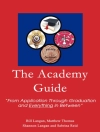This book chronicles the live of a Peace Corps volunteer in Libya in the late 1960s, including the first American account of living through the revolution that brought Gaddafi to power. The author moves from campus protests at the University of Washington in the spring of 1968, to Peace Corps training in Utah and the Navajo Nation in New Mexico, to living and teaching in an isolated village in Libya, to a European summer vacation, to the revolution that led to charges that Peace Corps volunteers were CIA agents, to returning to the U.S. in October, 1969, to witness the anti-war moratorium on the Capital Mall in Washington, D.C. The heart of the story is the author’s own evolving journey as a teacher, during which time he began to question both the official curriculum of English instruction and the broader purposes of teaching for liberation. This is also a story about the author’s education and re-education in Libya as he struggles to learn the rules of everyday life (including the rules of gender and sexuality) as a stranger in the village, and as he begins to see and appreciate the world through somewhat different eyes. Part of his education involved a reconstruction of the history of the village in terms of wave after wave off European colonizers—-from the time of the Romans, to the Italian fascist colonizers, to the liberation of the village by the British chasing Rommel’s troops across the desert, to its decline, renaming, and reappropriation as an Arab village. The author brings all this up to the late 1960s by describing the role of U.S. foreign policy in the “development” of Libya in league with global oil, and with the support of the largest air base outside the continental U.S. near Tripoli. This is, finally a coming of age story–about a young man who was desperately looking for something to believe in and live for, and more pragmatically looking for a way out of the draft and Vietnam, and out of an America that seemed to be slippinginto collective madness. It is a story (like all coming of age stories) about setting off on a great youthful journey of self-discovery, and a rekindling of the human spirit. Audiences for this book include: college students (undergraduate and graduate) in education, cultural studies, and Arabic studies; former Peace Corps volunteers and those interested in the Peace Corps and its history; readers interested in recent developments in Libya looking for some historical perspective on how Gaddafi came to power and why the revolution turned anti-American; and all those interested in a first-hand account of what America was like at the end of a decade ushered in with Kennedy idealism and the Peace Corps. A powerful story of exile and a search for home, Volunteers of America is the Odyssey of a generation. Awakening to a world in flames, inspired by visions of liberation erupting everywhere, Dennis Carlson heard the chords of freedom echoing all around him and faced the question: Which side are you on? Here is Carlson’s poignant and still timely answer to that question. – Bill Ayers, author of Fugitive Days and many other books on education, Distinguished Professor of Education, University of Illinois, Chicago.
विषयसूची
Foreword; We Are Leaving; Chapter 1: The Gathering Storm; Chapter 2: A Way Out of Here; Chapter 3: The Making of a Volunteer; Volunteers of America in Libya; Chapter 4: Life Among the Ruins; Chapter 5: The Rituals of Everyday Life; Chapter 6: The Making of a Teacher; Chapter 7: The Village and the City; Chapter 8: Stranger in the Village; Chapter 9: The Tripoli Apartment; We Are Leaving; Chapter 10: Europe on $5 a Day; Chapter 11: After the Revolution; Chapter 12: Coming Home.












